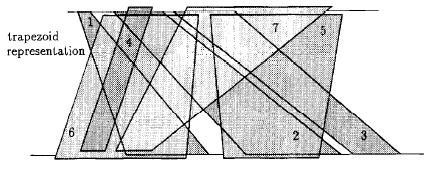|
Intersection Graph
In graph theory, an intersection graph is a graph that represents the pattern of intersections of a family of sets. Any graph can be represented as an intersection graph, but some important special classes of graphs can be defined by the types of sets that are used to form an intersection representation of them. Formal definition Formally, an intersection graph is an undirected graph formed from a family of sets : S_i, \,\,\, i = 0, 1, 2, \dots by creating one vertex for each set , and connecting two vertices and by an edge whenever the corresponding two sets have a nonempty intersection, that is, : E(G) = \. All graphs are intersection graphs Any undirected graph may be represented as an intersection graph. For each vertex of , form a set consisting of the edges incident to ; then two such sets have a nonempty intersection if and only if the corresponding vertices share an edge. Therefore, is the intersection graph of the sets . provide a construction that is more e ... [...More Info...] [...Related Items...] OR: [Wikipedia] [Google] [Baidu] |
Trapezoid Graph In graph theory, trapezoid graphs are intersection graphs of trapezoids between two horizontal lines. They are a class of co-comparability graphs that contain interval graphs and permutation graphs as subclasses. A graph is a trapezoid graph if there exists a set of trapezoids corresponding to the vertices of the graph such that two vertices are joined by an edge if and only if the corresponding trapezoids intersect. Trapezoid graphs were introduced by Dagan, Golumbic, and Pinter in 1988. There exists (n\log n) algorithms for chromatic number, weighted independent set, clique cover, and |
